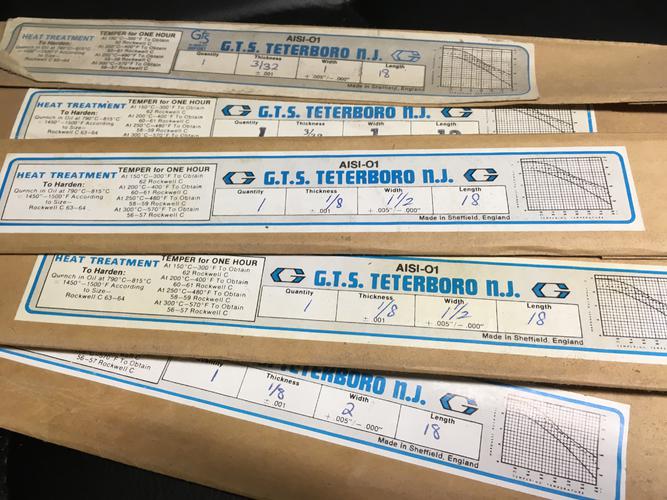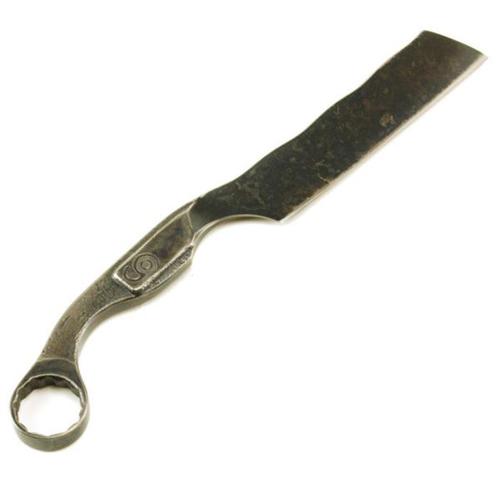Results 41 to 50 of 69
Thread: Sheffield steel superiority
-
09-24-2016, 04:23 AM #41

I bought a rusty old W&B near wedge once & I used the scales off of it. A few months later, I thought I would clean the rust off to see how bad it was. It was pitted some but so what. I found some more scales & put it in them. My friend who is into straights came by & asked if he could hone it so I handed it to him. About an hour later he sent me a text with a video clip of the razor popping hairs, thick, wiry hairs. I got it back & shaved with it & it was one of the best shaves I had ever had.
-
09-24-2016, 05:10 AM #42Previously lost, now "Pasturized"


- Join Date
- Oct 2005
- Location
- Winnipeg Manitoba Canada
- Posts
- 1,333
Thanked: 351
I do believe that the Brits figured out quality steel first, but I have an awful hard time believing that 1800's Sheffield steel can compete with todays 1st world quality steel.
I don't think there is a secret they took to their grave, but rather that it was of decent quality and that today it's still decent quality. Todays requirements of cutting steels has put us into the powdered sintered steel era, because there is a need for it. Straight razor makers often attempt (much like knife smiths) to use modern tool steels, but these steels were never designed to be used for shaving... they are designed to cut a variety of materials in the machine shop. Perhaps the Swedish steel used in making DE blades is formulated for such, but I suspect they've just figured out that what they make may be suitable for razor blades.
I just don't see that shaving, and in particular straight razor shaving, justifies the amount of work and formulation, to produce the optimum steel for such use. *I* think (and this is JUST me) that razor manufacturers today simply try to adapt what they can source, to making razors or razor blades. Perhaps Gillette makes enough blades and consumes enough steel to warrant a custom blend of steel.... but I'm thinking nope..... not enough.
Feel free to disagree, because I don't think ANYONE has the true answer....
Regards
Kaptain "What do I know?" Zero"Aw nuts, now I can't remember what I forgot!" --- Kaptain "Champion of lost causes" Zero
-
09-24-2016, 06:26 AM #43
-
09-24-2016, 02:45 PM #44

Has anyone taken old worn out W&B Sheffields and reforged them?
-
09-25-2016, 02:43 AM #45Senior Member

- Join Date
- Mar 2014
- Location
- Coimbra PT, Vancouver BC
- Posts
- 757
Thanked: 171
-
-
09-25-2016, 03:14 AM #46

Now that is a superb comment in the most witty way, bravo, much appreciated.

Bloody Mary went down hard if I recall with about a dozen or so grossly incompetent axe blows before he got her head off, and then when he picked her head up, I believe her wig fell off and the head rolled around on the floor, they found her little dog under her skirts, and it sat there for hours....
-
09-25-2016, 01:55 PM #47

I think it is more about the processes that were used by the craftsman than the source of the steel. Just like some guys can hone a razor to a beautiful edge in no time, and a less experienced person could take triple the time with the best gear and still have a razor that won't shave.
I would like to know what the make up of the steel is, scientifically speaking, not "its the smoothest I ever felt". There will likely be a very close metallurgical match available in a more consistently manufactured modern steel. Then once we KNOW what the steel is the real work starts.
How was it heat treated, thermocycles used for grain refinement, multiple quenches or single, soak time at temp, what was the tempering process, one cycle, three cycles, whats the final HRc? That one piece of steel can be treated many different ways, and the final product will vary from shop to shop, or maker to maker from superb to trash and everything in-between.
You can take a standard piece of 0-1 (I know soulless and nothing like "Sheffield steel" lol) and the heat treat possibilities alone can give that steel a huge variation in performance. I believe those blade smiths that made Sheffield steel famous had their heat treating and tempering processes refined to the point of making a stand out product. There is a lot that goes into giving a hunk of steel that soul and just as many ways to screw it up.
Think about your favorite grandmothers cooking, you think she makes the best apple pie in the world. If your grandma left the same ingredients on the counter for your wife to make you that favorite apple pie...well , there could be a lot of variation. Now if she shared the secrets of 60 years in the kitchen with your wife and taught her, that pie is now not so hard to duplicate.
Is this the best O-1 in the world? Or is it just O-1?

So, does anyone know what kind of steel they use in Sheffield England to make those excellent quality razors ?
Thats what I want to know, and that answer is only coming from someone wearing a lab coat who can definitively tell us what the elemental make up of the steel is. There is surely a modern, more consistent steel available. It's a low tech carbon steel, would probably surprise many of us.
There is no arguing they made a superior product, now to hunt down that dude in the lab coat so we can get the answer.Last edited by AKmik; 09-25-2016 at 02:01 PM.
-
09-25-2016, 03:04 PM #48Senior Member



- Join Date
- Mar 2012
- Location
- Thunder Bay, Ontario, Canada
- Posts
- 17,334
Thanked: 3228
When you put in a long and hard apprenticeship, starting in some cases as a preteen, You do get to be very competent in your trade. I think that was true in most countries at that time period. You just can't beat hard earned experience in turning out an excellent product.
BobLife is a terminal illness in the end
-
09-25-2016, 03:45 PM #49

It was also mentioned that it was also the iron foundry, and what that contained and may have contaminated the steel with, that also may have given the steel some unknown, mysterious aspect.
Swedish ore may have been used in a number of instances as mentioned, but it is the artisan, the heat treatment, and the foundry itself that all contributed to make Sheffield steel what it is. To recreate all those factors is essentially what you'd need to replicate in order to return to even a semblance of the original Sheffield steel.
I was exchanging some PM's with another member, and mentioned one of the aspects that have really held me back from pursuing the custom route is when I tried a few customs, now my opinion only, I always felt the razor felt like a wrench that had been turned into a razor. I never liked the feel of the steel....
-
09-25-2016, 05:22 PM #50


Like this Phrank? hahaa
hahaa
I am one of those "have to know" types, and this question needs an answer. I have requested a quote from a full service metallurgical laboratory, and will supply a sacrificial old Sheffield blade for testing if the price is not too crazy. I will update once I hear back if it is a possibility or not. Seems simple enough.
I want to know what is in that pie.
-
The Following User Says Thank You to AKmik For This Useful Post:
Phrank (09-25-2016)


 90Likes
90Likes LinkBack URL
LinkBack URL About LinkBacks
About LinkBacks








 Reply With Quote
Reply With Quote

